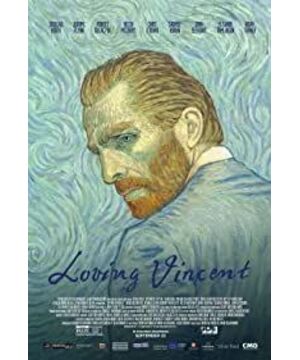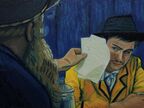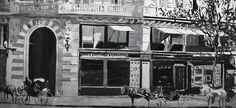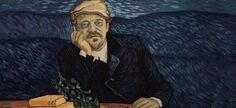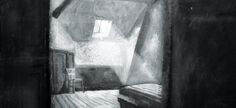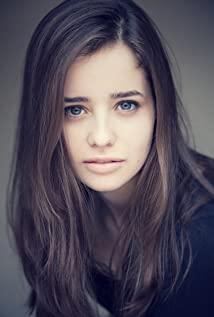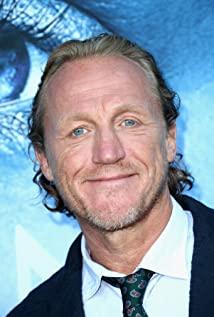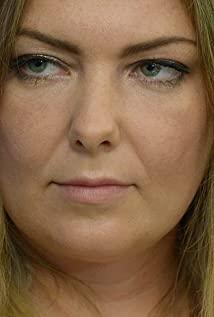2015 is the 125th anniversary of Van Gogh's death. The Polish painter and director Dorota Kobiela wanted to pay tribute to this talented painter. He and Oscar-winning producer Hugh Welchman launched a crowdfunding on kickstarter, which was a huge success. By the way, kickstarter can be said to be the originator of American crowdfunding websites, and many projects are successfully funded on this platform. "Loving Vincent", an animated film tribute to Van Gogh, is the first fully hand-painted oil painting feature film in history. It was created by the Oscar-winning Polish production team Breakthru Films.
The studio recruited oil painters from all over the world. After three weeks of training on Van Gogh's artistic style, the selected candidates joined the team and began to create. These more than one hundred oil painters worked together in their studios in the famous city of Gdansk in northern Poland to create 56,800 oil paintings and then turn these paintings into movies. The entire creative process is based on the PAWS system, including the aid of stop-motion animation production software to assist hand-drawing.
The painters who completed the painting process came from 15 countries, and a large part of them came from Poland. The Polish art education system is very mature. It is said that people who study art begin to receive a certain sub-category of art education from a very young age. Some painters are from Ukraine, and others are from different countries on all continents. The youngest of these painters is 21 years old, and the oldest is 63 years old. Many of them basically have an art degree or are engaged in art restoration work, and a few are from non-disciplinary backgrounds.
The film also invited a number of actors, first by real actors on the green screen to make animations, and then painters based on these animations. The process is quite complicated.
As for the plot of the film, it is based on more than 800 letters left by Van Gogh to restore the life of the legendary painter. Most of these 800 letters were sent by Van Gogh to his brother Theo. Theo is his younger brother, his partner and confidant, and his staunch patron of painting. In the correspondence between the two brothers, the most frequently mentioned topic was "money."
Theo was a small art dealer, not very wealthy. Van Gogh wrote to his brother with guilt and entanglement every time. Van Gogh’s letter to his younger brother, as summarized by others, is basically this kind of routine: first talk about how he spends and save money, and then he constantly makes assurances that he will never easily spoil his brother’s hard-earned money. If Dior sent him the money late, he would chatter about his dilemma. Although the end of the road, Van Gogh is still complacent. He promised his brother that although he has not succeeded for the time being, and although his paintings are still worthless at the moment, one day in the future, his paintings will be sold for 200 francs. When this day comes, when the price of Van Gogh's paintings far exceeds 200 francs, Van Gogh and Theo can no longer see all this. On July 27, 1890, Van Gogh raised a gun to commit suicide in a wheat field. Two days later, he died in the arms of his younger brother.
Before Van Gogh's death, he wrote two letters to his younger brother, one sent out, and one taken with him. The content of the letter sent is no different from the previous letter. However, in the letter he carried with him and stained with his own blood, he was uncharacteristically and did not mention money. Below is a part of this letter. "My dear brother: Thank you for your letter and the 50 francs that I sent together. There are many things I want to tell you, but they find it useless. I hope you are facing those decent gentlemen. I have experienced happiness and sadness myself. So how do you think about my impact on your family, I don’t think I care. But I quite agree with what you said: raising children in an apartment on the fourth floor is a terrible thing for you and the left. Important things are moving in a good direction. Why should I waste my tongue on less important things? In my opinion, there may be a long way to go before we have a chance to discuss the situation more appropriately. No matter what they think, other painters always instinctively keep a distance from the actual things of art business. Yes, the truth is that we can only let our works speak. However, my dear brother, there is one thing I often Speaking to you, I am going to tell you again now, these words come from a mind that is doing everything possible to do things as well as possible, and from the sincerity that only such a mind can embody—I want to say to you once: I I will always treat you as a different art dealer. With my work as an intermediary, you have contributed to the birth of some works, and these works can withstand the test of the storm. This is something we have to face, this It is all or at least the main thing that I have to tell you at a relatively critical juncture. At such a juncture, things are very tense between the dealers who manage the dead works and the dealers who manage the works of the living artists. Oh, my own work. I risked my life to paint my own work. My sanity has already lost half of it. It doesn’t matter. What matters is that you are not among the art dealers I am talking about. Think, you can still stick to your position and act with kindness, but what about it?" The younger brother Theo followed his elder brother whom he admired all his life 6 months later. They were buried side by side in Auvers, France. This is the last station in Van Gogh's 37 years of life.
Van Gogh only sold the oil painting "The Red Vineyard in Yar" during his lifetime. He didn't really become famous until 11 years after his death and became famous all over the world. This is all thanks to the efforts of his younger brother Theo’s wife, Johanna Bunge. Bunge completed her husband's unfinished business. She compiled all of Van Gogh's paintings and letters, and worked for Van Gogh's reputation all her life.
Every frame in this movie is a real oil painting, and every oil painting is reproduced and recreated by the artist based on more than 120 original paintings by Van Gogh.
When Van Gogh was alive, he said: "When I paint a man, I will paint his eloquent life." He was unknown in his lifetime, but after his death he won the supreme honor in the art world. Today, more than 100 painters have drawn the love of him from all over the world and painted his life.
The title of the film, including the cast and crew list, is displayed on a virtual canvas as the carrier, and the name of each producer is smeared on the screen. The final picture turned into Van Gogh's "Starry Sky". The camera is elevated, passing over the black flame-like cypress trees. "Starry Sky" was created when Van Gogh cut off his ears and entered the mental hospital in Arles. In many of his works, there are dark cypress trees similar to those in "Starry Sky". For example, "Cypress Tree and Starry Sky".
Van Gogh has created more than one painting of cypress trees. The cypress trees always maintain a dreamlike curvature, and the green flames rush toward the sky. At the beginning of the story, two men are having a physical conflict. Both figures are based on Van Gogh's paintings. The male protagonist in the yellow jacket is the image of Van Gogh's former friend, Armand Lulin, the son of the postman Joseph Lulin. The officers and the women in the tavern who came to inquire were also drawn based on the images in Van Gogh's works.
When Van Gogh painted Armand's portrait, Armand was only 16 years old and was an apprentice blacksmith. Later, he went to serve in Tunisia.
The prototype of the soldier who was in conflict with the actor Armand is Van Gogh's series of works "Light Infantry".
The prototype of the officer is Van Gogh's friend Lieutenant Miller, an officer in the Juaf Barracks. Lieutenant Miller was the son of a police officer. When Van Gogh painted his portrait, he had just returned from India and was recuperating in southern France. Lieutenant Miller died in Paris during World War II.
The protagonist and the police officer had a conversation in a billiard hall.
And this billiards hall is also based on Van Gogh's 1888 work "Night Indoor Café". This painting signed by Van Gogh in the lower right corner depicts the scene of an indoor cafe. The door curtain in the middle of the picture is half open and ajar. It is assumed that there are many independent small rooms behind the door. Five customers were sitting along the wall on the left and right sides. The waiter stood facing the audience under the lights. There was a pool table in the middle of the room on his side. The five customers in the picture are described as drunk and sleepy homeless men, prostitutes and prostitutes. Some scholars believe this is because the cafe is a place where poor people and prostitutes hang out at night. It is said that this cafe is located in Form Square and is a cafe frequented by Van Gogh. Two months after painting this work, Van Gogh moved into the yellow house.
Next, the scene in which Van Gogh cut off his ears appeared in the film. There are different opinions in historians about why Van Gogh cut off his ears. On July 29, 2015, two years ago, an explosive news made a sensation in the art world: archaeologists found an auricle bone in the Arles region of France. This auricle bone is most likely a left cut by Van Gogh Ear. After skeletal structure investigation and preliminary analysis, it was found that the left ear belonged to a white male between 30 and 40 years old. Van Gogh cut off his left ear when he was 35 years old. According to local information, there were only 4 cases related to the removal of ears in the area in the past 150 years, and all the 4 removed ears have been found. Therefore, even though the DNA matching test has not yet been carried out, archaeologists still confirm that this ear should belong to the post-impressionist painter Van Gogh. Near the auricle bones found, archaeologists found a pipe of the same size as in Van Gogh's self-portrait, and a Van Gogh paintbrush. The pipe was also filled with Van Gogh's favorite tobacco. On December 23, 1888, Van Gogh cut off his left ear after a constant quarrel with Gauguin. However, the specific situation at that time was still unknown to the public. Perhaps from this latest archaeological discovery, scholars can unearth clues to the truth of this period of history. The descendants of Van Gogh expressed their gratification to Van Gogh's discovery of the left ear. After the final inspection, Van Gogh's left ear will be sent back to Orville, where it will be buried with Van Gogh's body.
In the film, Van Gogh, with his ears cut off, groaned painfully on the sofa. Good friend Joseph Rulin came to help. Van Gogh's room should be based on the "Al's bedroom" series. This is also the only interior view that Van Gogh painted for the Yellow House-not the studio, but his own bedroom.
Joseph Rulin, a friend of Van Gogh's postman, appeared in his paintings many times. Van Gogh was very close to Lulin's family. In addition to Joseph and Armand, Van Gogh also painted Mrs. Lulin and his youngest son.
In this plot, it seems that the dispute between Van Gogh and Gauguin can be vaguely seen. Van Gogh begged Gauguin to stay in the "yellow house", but Gauguin remained unmoved. The plot once appeared in the famous novel "The Moon and Sixpence", the difference is that Maugham changed Van Gogh into a female figure. This "yellow house" appeared in the film, which was born out of Van Gogh's original painting. In May 1888, Van Gogh rented a hotel in Arles to live in. Because its outer wall was painted yellow, it was called the "yellow house". Van Gogh longed for the "artist's paradise" for a long time, so he hoped that this home could become the "future studio" of southern France, and he hoped that he could join Gauguin to live together as soon as possible (Gaguin arrived in Arles on October 20) . Van Gogh intends to turn the yellow house in Arles into a painter's home, which is his most utopian scheme. He described his "painter's house" in detail. In his letter to Theo, he wrote: "I want to make it a real'painter's house'. It is not luxurious, on the contrary, there is nothing luxurious in it." "The house has brought me. A sense of ease, from now on, I feel that I am working for the future." He lived here until April 1889.
Joseph and Armand had a long conversation in the cafe, and finally decided to explore the death of Van Gogh. This "Outdoor Cafe" was painted in the same period as the indoor cafe mentioned above in 1888. Van Gogh once said that he loved painting night scenes.
After a long talk between the two, they decided to "look for Van Gogh." The theme of the film is now expanded. From the 13th minute of the film, Van Gogh's paintings slowly emerged one after another. First is the "Anière Bridge" in 1887. The bridge is on the Seine. Van Gogh did not hesitate to his enthusiasm for the Seine, and he once described the scene of the Seine countless times. Even the bridge in the picture was created by Van Gogh from different angles.
Then there are "Creich Avenue", "Windmill Town", "Slopes of Montmartre", "Railway on Montmartre Street", "Overlooking Montmartre from the Observation Deck", and "Paris Rooftop View". Among them, the apartment where Van Gogh and Theo lived together is near Clizi Avenue, and the Tambourine Cafe is also located at No. 62 on Clizi Avenue. In Montmartre, Van Gogh created 9 paintings about windmills, "Windmill Town" is one of them.
The narrow one is a screenshot of the movie screen, which is posted for intuitive comparison, not the original. I don’t have screenshots of the ones that are not easy to compare. You can watch the moving images in the movie in the 14th minute. The scene is very beautiful. Armand saw Daddy Don Ji. Daddy Tang Ji is the owner of a Montmartre painting shop with a kind and gentle personality. Cezanne, Gauguin and others also often haunt Don Quix's shop. He once helped Van Gogh before his death and was his friend. Van Gogh has created many portraits for him.
It can be seen that there are many images of Japanese paintings around this portrait of Van Gogh. This is Van Gogh's copy of Ukiyo-e works. In another portrait of Don Quixote, Van Gogh also copied many Japanese works on the background of the painting. On the upper right is Hiroshige’s "Famous Places of Edo White View", on the lower right is Hideizumi’s "Oiran Picture", Hokusai’s "Red Fuji" in the center, Hiroshige’s "Asuka Mountain Twilight Snow" in the upper left, and Toyokuni in the left center Of "Kabuki Actors". This portrait should be selected in the movie.
Armand concluded his trip after a long conversation. He left by transport. Van Gogh's "train carriage" and "horse carriage and distant train" appeared at this time. Beautiful and moving.
Armand came to the next stop to find Van Gogh. Here, more characters from Van Gogh appeared. The girl playing the piano, the girl in white, and the young owner of a small hotel. The girl playing the piano is called Margaret Gachet. She is the daughter of Doctor Gachet. This painting was originally three vertical paintings connected together, the other two are sketches of Marguerite's back profile. There are rumors that Van Gogh had an ambiguous affection for Marguerite, whether it was true or not.
In the movie, the woman in white is the housekeeper of the Gachet family. Its prototype is the "woman in white" by Van Gogh.
The young owner of the hotel below, called Adelin Lavu, was only 12 years old when Van Gogh was painting. It is said that after Van Gogh's death, the little girl sold her portrait to a passing American businessman for 40 francs.
Van Gogh also created "Marguerite in the Garden" for Margaret Gachet.
The "Yacht on the Oise River", the "Oise Church", and the "Twilight Landscape" follow Armand's footsteps, and the scenes in Van Gogh's paintings have awakened. Paintings such as "Cow" and "Drinker" were also resurrected during Armand's journey.
Armand had a conversation with the girls. He felt that he was getting closer and closer to Van Gogh. At night, he saw Van Gogh in a dream. Van Gogh looked back at him from a distance, his expression confused and sad. Armand woke up. He woke up in the white house where Van Gogh had been so close.
He went to the wheat field. The wheat field, the most thrilling stop in Van Gogh's life. He shot himself here. This is a shot that is remembered by the world. Armand picked up his chair and sat in the middle of the wheat field. He imagined and imitated over and over again, how Van Gogh fell into this golden yellow.
Chair, chair again, this unforgettable intention. Van Gogh once moved a chair into the yellow house enthusiastically, but finally left the place reluctantly. He once created a "Gauguin chair" with enthusiasm. How many tangled emotions did that chair bear? Many years after Van Gogh's death, Gauguin also announced a "Van Gogh chair" of his own creation. It's a pity that Van Gogh didn't have the chance to see it. Armand looked for Van Gogh in the language of many people. He met working old men, met one-eyed policemen, met lunatics and drinkers, and met the doctor in the chair.
He felt that he was getting closer to Van Gogh. He returned to the eternal wheat field, and his chair had fallen to the ground. Armand threw a branch toward the wheat field, and the crow was suddenly startled and fluttered. It's like the moment when Van Gogh shot himself. Armand finally met Doctor Gachet. Doctor Gachet told him the rest of the story.
This Doctor Gachet is not only a psychiatrist, but also an amateur painter. He was the main supporter of the Impressionist movement and the last companion of Van Gogh. Van Gogh once commented on Dr. Gachet: "He is more ill than me."
In this way, Armand ended the journey. He got into the carriage on the return journey. He passed by Codyville's thatched cottage, Provence's haystack, the only vineyard in Van Gogh's painting that was sold during his lifetime, and the working sowing man. He passed Van Gogh.
In the end, Armand and Joseph sat together under the "Rhone Starry Night". Van Gogh's confused and sad face resurfaced again. The music rang. The whole film ends.
This film not only uses extensively the paintings drawn by Van Gogh, but also uses the style of Van Gogh's works to the greatest extent in other pictures. For example, near the residence of Dr. Gachet, when the girl cuts the rose, the close-up of the rose is taken from "The Rose and the Beetle."
For another example, Van Gogh was painting in a field in the first memory of the movie shortly after it started. That field is the "poppy field" born out of Van Gogh.
The above includes 57 complete paintings by Van Gogh. Information about these paintings and other paintings appearing in the film will continue to be supplemented. Please don’t hesitate to enlighten me. thank you all.
Finally, if you are interested in watching more works with similar styles:
View more about Loving Vincent reviews


